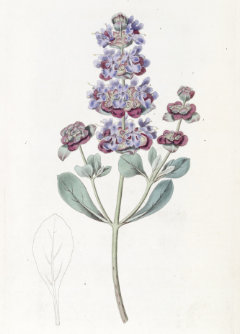 |
|
edibleplants.org |
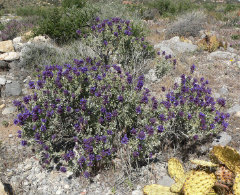 |
| Stan Shebs. Creative Commons Attribution-Share Alike 3.0 Unported license. |
Translate this page:
Summary
Purple Sage or Desert Sage (Salvia dorrii) strong, earthy-flavoured leaves and flowers can be used in teas and seasoning. It is ideal for xeriscaping, rock gardens, and native plant gardens. Its aromatic foliage is often used in traditional medicine and for smudging. Salvias are a large group of plants in the mint family. They are native to many parts of the world, including Europe, Asia, Africa, and the Americas, and they are distributed throughout the temperate and tropical regions. There are over 900 species of Salvia, making it one of the largest genera in the mint family. The centre of diversity for Salvia is Mexico, with about 500 species. Salvias have aromatic leaves and flowers, typically purple, blue, or white. The leaves are usually green, but some species have variegated foliage. Harvest all year from the first year.
Physical Characteristics

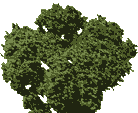 Salvia dorrii is an evergreen Shrub growing to 0.6 m (2ft) by 0.6 m (2ft in) at a fast rate.
Salvia dorrii is an evergreen Shrub growing to 0.6 m (2ft) by 0.6 m (2ft in) at a fast rate.
See above for USDA hardiness. It is hardy to UK zone 6 and is not frost tender. The flowers are pollinated by Bees. The plant is self-fertile.
It is noted for attracting wildlife.
Suitable for: light (sandy) and medium (loamy) soils, prefers well-drained soil and can grow in nutritionally poor soil. Suitable pH: neutral and basic (mildly alkaline) soils and can grow in very alkaline soils.
It cannot grow in the shade. It prefers dry or moist soil and can tolerate drought.
UK Hardiness Map
US Hardiness Map
Synonyms
Audibertia dorrii Kellogg. Audibertiella dorrii (Kellogg) Briq. Ramona dorrii (Kellogg) Briq.
Plant Habitats
Edible Uses
Strong, earthy-flavoured leaves and flowers can be used in teas and seasoning. Seed—cooked. Ground into a powder and used to thicken soups, etc., or added to cereal flours when making bread, etc. [105 ].
References More on Edible Uses
Medicinal Uses
Plants For A Future can not take any responsibility for any adverse effects from the use of plants. Always seek advice from a professional before using a plant medicinally.
A decoction of the seeds and stems is used to treat colds[61 ]. A decoction or infusion of the leaves has been used to treat fevers, coughs, colds, and stomach aches[257 ]. A decoction of the leaves and stems can be drunk and used as a wash or steam bath to treat headaches[257 ]. A poultice of the crushed leaves has been applied to the chest to treat congestion[257 ]. A decoction of the flowering stems has been used as a poultice and a wash to treat swollen leg veins[257 ]. The plant is much valued as a treatment for an epileptic or faint person, either administered as a drink or prepared like tobacco and the smoke blown into the patient's face[216 , 257 ].
References More on Medicinal Uses
The Bookshop: Edible Plant Books
Our Latest books on Perennial Plants For Food Forests and Permaculture Gardens in paperback or digital formats.
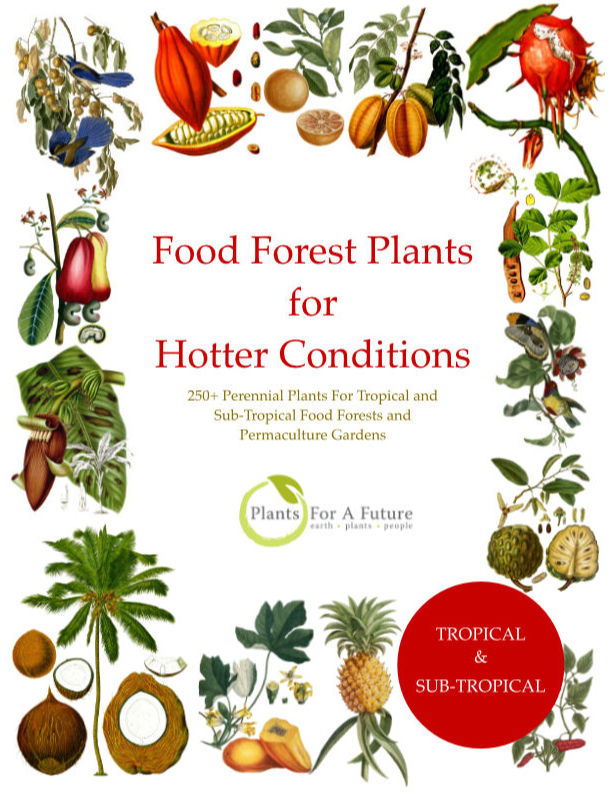
Edible Tropical Plants
Food Forest Plants for Hotter Conditions: 250+ Plants For Tropical Food Forests & Permaculture Gardens.
More
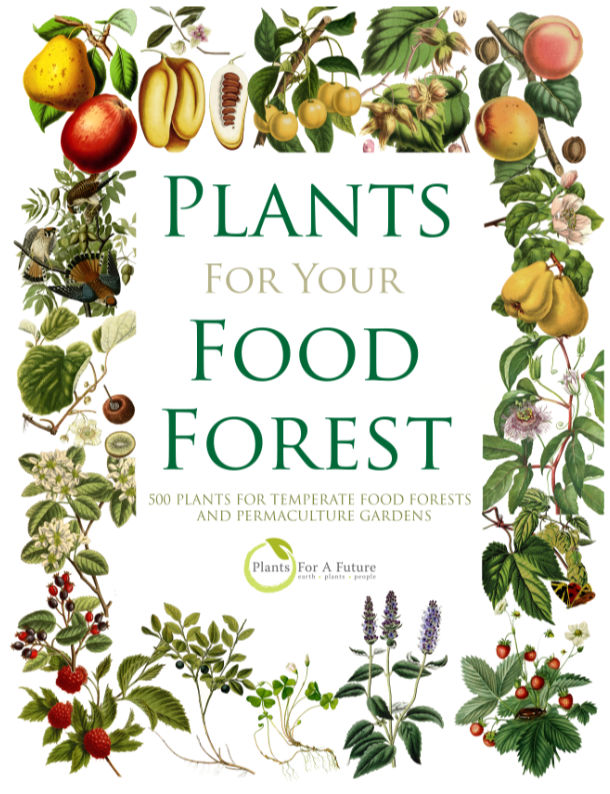
Edible Temperate Plants
Plants for Your Food Forest: 500 Plants for Temperate Food Forests & Permaculture Gardens.
More
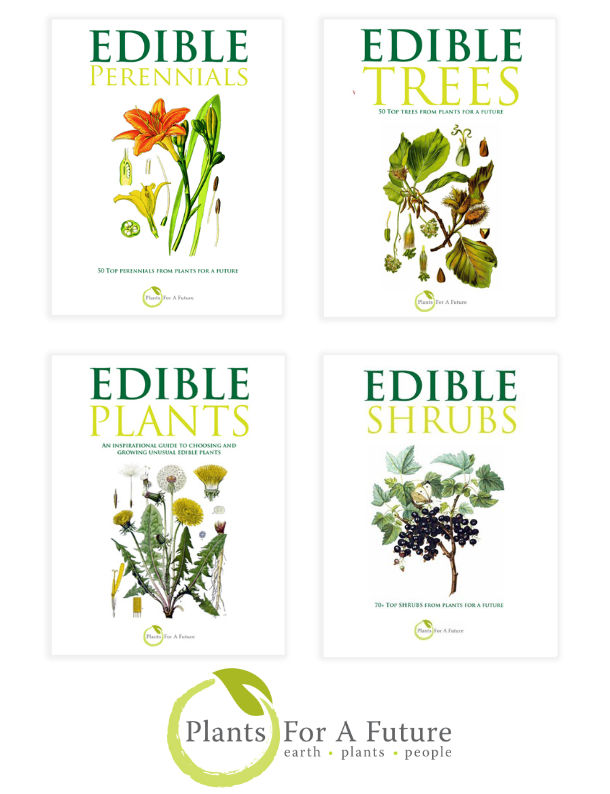
More Books
PFAF have eight books available in paperback and digital formats. Browse the shop for more information.
Shop Now
Other Uses
Agroforestry Uses: The flowers are a good source of nectar and pollen[277 ]. The plant can be used to make a low hedge. It will maintain its rounded shape without pruning[277 ]. This plant can be used for revegetation and diversification of rangeland, particularly in harsh, rocky sites[277 ]. Nectary - Flowers rich in nectar and pollen: Salvia species are excellent for pollinators. The flowers are rich in nectar, attracting bees, butterflies, and even hummingbirds. Wildlife - Food (Fruit, Seeds, Leaf litter, Shelter, Nesting, Roosting): Although the seeds and fruits are not significant food sources, the dense foliage can provide some shelter for wildlife, and it can serve as ground cover for small animals or invertebrates. Invertebrate Shelter (Overwintering sites, Leaf litter, Groundcover): Sage plants provide ground cover and their woody stems and dense leaf litter can offer overwintering sites and protection for beneficial insects. Pest Confuser (Smell): Sage has a strong, aromatic smell that can repel pests like insects and herbivores. It is often planted as a companion plant to deter harmful pests.
Special Uses
References More on Other Uses
Cultivation details
Soil Texture: Thrives in light (sandy) and gravelly or rocky soils. It prefers nutrient-poor, well-drained soils typical of arid and semi-arid regions. Soil Moisture: Prefers dry soils. It is highly drought-tolerant and does not tolerate overly moist or waterlogged conditions. Drainage: It requires excellent drainage, as it is adapted to arid environments with minimal water retention. Soil pH: Grows best in neutral to alkaline soils (pH 7.0–8.5). Does not thrive in highly acidic soils. Saline Tolerance: Low tolerance for saline soils, but it can survive in moderately saline conditions if drainage is good. Tolerance of Poor Soil: It thrives in poor, nutrient-deficient soils, particularly in desert and chaparral ecosystems. Light Requirements: Requires full sun for optimal growth and flowering. It is not suited for shaded areas. Height: Typically grows to about 30–90 cm (1–3 feet) tall, with a similar spread. Pollination: bees, butterflies, and hummingbirds attracted to its vibrant purple to violet flowers. Temperature: Hardy in USDA zones 5–9. It tolerates high heat and cold, making it well-suited for arid and semi-arid climates. Drought Tolerance: Extremely drought-tolerant once established, making it ideal for xeriscaping and low-water landscapes. Flowering: Produces clusters of showy purple to violet flowers in late spring to early summer. The flowers emerge from aromatic grey-green foliage. Wildlife: Attracts pollinators, including bees, butterflies, and hummingbirds. Birds may also eat its seeds. Pests and Diseases: Generally pest-free and resistant to most diseases. Overwatering can lead to root rot or fungal issues. Pruning: Prune lightly after flowering to maintain shape and encourage new growth. Avoid heavy pruning into woody stems. Salvia dorrii is found wild in areas where the mean annual precipitation ranges from 180 - 380mm[277 ]. It is moderately cold-hardy, being able to tolerate short periods with temperatures down to around -15°c[200 ]. Requires a very well-drained light sandy soil in a sunny position[200 ]. Prefers a rich soil[1 ]. Soils rich in nitrogen encourage excessive leaf growth at the expense of flowering[11 ]. Established plants are tolerant of drought[277 ]. Plants can be killed by excessive winter wet[200 ]. The plant is resistant to browsing by deer and rabbits[233 , 277 ]. The native range of this species is W. U.S.A. It is a subshrub or shrub and grows primarily in the temperate biome [2-5]. Sage leaves can be harvested throughout the growing season, with the best flavor typically from spring to early summer, just before flowering.
Sage usually flowers in late spring to early summer, generally between May and June (Northern Hemisphere), depending on the specific species and growing conditions. Sage is a moderately fast-growing herb, often reaching maturity in about 1 to 2 years under optimal conditions. Many sage species are self-fertile.
References Carbon Farming Information and Carbon Sequestration Information
Temperature Converter
Type a value in the Celsius field to convert the value to Fahrenheit:
Fahrenheit:
The PFAF Bookshop
Plants For A Future have a number of books available in paperback and digital form. Book titles include Edible Plants, Edible Perennials, Edible Trees,Edible Shrubs, Woodland Gardening, and Temperate Food Forest Plants. Our new book is Food Forest Plants For Hotter Conditions (Tropical and Sub-Tropical).
Shop Now
Plant Propagation
Seed - sow early to mid-spring in a greenhouse[200 ]. Germination usually takes place within 2 weeks. Prick the seedlings into individual pots when they are large enough to handle and plant them in early summer. In areas where the plant is towards the limits of its hardiness, it is best to grow the plants in a greenhouse for their first winter and plant them out in late spring of the following year. Cuttings of half-ripe wood succeed at almost any time in the growing season[200 ].
Other Names
If available other names are mentioned here
Purple Sage or Desert Sage. Dorr's sage, Fleshy sage, Mint sage, Tobacco sage.
Native Range
Native to: Arizona, California, Idaho, Nevada, Oregon, Utah, Washington USA
Weed Potential
Right plant wrong place. We are currently updating this section.
Please note that a plant may be invasive in one area but may not in your area so it's worth checking.
None Known
Conservation Status
IUCN Red List of Threatened Plants Status : Not Available

| Related Plants
|
| Latin Name | Common Name | Habit | Height | Hardiness | Growth | Soil | Shade | Moisture | Edible | Medicinal | Other |
| Cistus salviifolius | Rock Rose, Salvia cistus, Sage Leaf Rock Rose | Shrub | 0.6 |
8-11
| F | LM | N | DM | 1 | 0 | 3 |
| Salvia apiana | White Sage, Compact white sage | Perennial | 3.0 |
7-10
| M | LM | N | DM | 3 | 1 | 3 |
| Salvia ballotaeflora | | Annual | 0.0 |
-
| | LM | N | DM | 1 | 0 | |
| Salvia carduacea | Thistle Sage | Annual/Perennial | 0.7 |
7-10
| | LM | N | DM | 2 | 0 | |
| Salvia carnosa | Purple Sage | Shrub | 0.8 |
6-9
| | LM | N | DM | 1 | 2 | |
| Salvia clevelandii | Blue Sage, Fragrant sage, Chaparral Sage | Shrub | 0.6 |
8-11
| M | LM | N | DM | 1 | 0 | 2 |
| Salvia columbariae | Chia, Ziegler's sage | Annual/Perennial | 0.7 |
6-9
| | LM | N | DM | 3 | 2 | |
| Salvia dorisiana | Sage Fruity Pineapple | Perennial | 1.3 |
9-12
| F | LMH | SN | M | 3 | 0 | 3 |
| Salvia elegans | Pineapple Sage, Pineapple-scented Sage, | Perennial | 1.0 |
8-11
| M | LM | N | DM | 3 | 1 | 3 |
| Salvia fruticosa | Greek Sage, Greek oregano | Shrub | 1.0 |
8-11
| M | LM | N | DM | 2 | 3 | 3 |
| Salvia glabrescens | | Perennial | 0.3 |
-
| | LM | SN | DM | 1 | 0 | |
| Salvia glutinosa | Jupiter's Distaff, Sticky Sage | Perennial | 1.2 |
4-8
| | LM | SN | DM | 1 | 0 | 3 |
| Salvia hispanica | Mexican Chia, Chia | Annual | 1.0 |
8-11
| M | LM | N | DM | 3 | 0 | 2 |
| Salvia japonica | | Perennial | 0.8 |
7-10
| | LM | SN | DM | 1 | 0 | 2 |
| Salvia lanata | | Perennial | 0.3 |
6-9
| | LM | N | DM | 1 | 1 | |
| Salvia lanigera | Wrinkle-Leaved Sage | Shrub | 0.0 |
-
| | LM | N | DM | 1 | 0 | |
| Salvia lavandulifolia | Spanish Sage | Shrub | 0.3 |
4-8
| | LM | N | DM | 2 | 3 | 2 |
| Salvia leucantha | Mexican Bush Sage | Shrub | 1.2 |
8-10
| F | LMH | N | M | 0 | 1 | 3 |
| Salvia lyrata | Cancer Weed, Lyreleaf Sage | Perennial | 0.6 |
4-9
| M | LM | N | DM | 0 | 2 | 0 |
| Salvia mellifera | Californian Black Sage | Shrub | 2.0 |
7-10
| | LM | N | DM | 1 | 2 | |
| Salvia microphylla | Blackcurrant Sage | Perennial | 1.2 |
7-10
| | LM | N | DM | 2 | 2 | |
| Salvia moorcroftiana | | Perennial | 0.9 |
6-9
| | LM | N | DM | 1 | 1 | |
| Salvia multicaulis | | Shrub | 0.3 |
7-10
| | LM | N | DM | 1 | 0 | |
| Salvia multiorrhiza | Dan Shen | Perennial | 0.6 |
5-9
| | LM | N | DM | 0 | 3 | |
| Salvia officinalis | Sage, Kitchen sage, Small Leaf Sage, Garden Sage | Shrub | 0.6 |
5-10
| M | LM | N | DM | 4 | 5 | 5 |
| Salvia plebeia | | Biennial | 0.5 |
-
| | LM | N | MWe | 1 | 1 | |
| Salvia pomifera | Apple Sage | Shrub | 1.0 |
7-10
| M | LM | N | DM | 2 | 2 | 2 |
| Salvia pratensis | Meadow Clary, Introduced sage | Perennial | 1.0 |
3-7
| | LM | N | DM | 1 | 0 | 0 |
| Salvia reflexa | Mintweed, Lanceleaf sage | Annual | 0.8 |
0-0
| | LM | N | DM | 1 | 0 | 0 |
|
|
Growth: S = slow M = medium F = fast. Soil: L = light (sandy) M = medium H = heavy (clay). pH: A = acid N = neutral B = basic (alkaline). Shade: F = full shade S = semi-shade N = no shade. Moisture: D = dry M = Moist We = wet Wa = water.
Now available:
Food Forest Plants for Mediterranean Conditions
350+ Perennial Plants For Mediterranean and Drier Food Forests and Permaculture Gardens.
[Paperback and eBook]
This is the third in Plants For A Future's series of plant guides for food forests tailored to
specific climate zones. Following volumes on temperate and tropical ecosystems, this book focuses
on species suited to Mediterranean conditions—regions with hot, dry summers and cool, wet winters,
often facing the added challenge of climate change.
Read More
Expert comment
Author
(Kellogg) Abrams
Botanical References
Links / References
For a list of references used on this page please go here
A special thanks to Ken Fern for some of the information used on this page.
Readers comment
| Add a comment |
|
If you have important information about this plant that may help other users please add a comment or link below. Only comments or links that are felt to be directly relevant to a plant will be included. If you think a comment/link or information contained on this page is inaccurate or misleading we would welcome your feedback at [email protected]. If you have questions about a plant please use the Forum on this website as we do not have the resources to answer questions ourselves.
* Please note: the comments by website users are not necessarily those held by PFAF and may give misleading or inaccurate information.
To leave a comment please Register or login here All comments need to be approved so will not appear immediately.
|
|